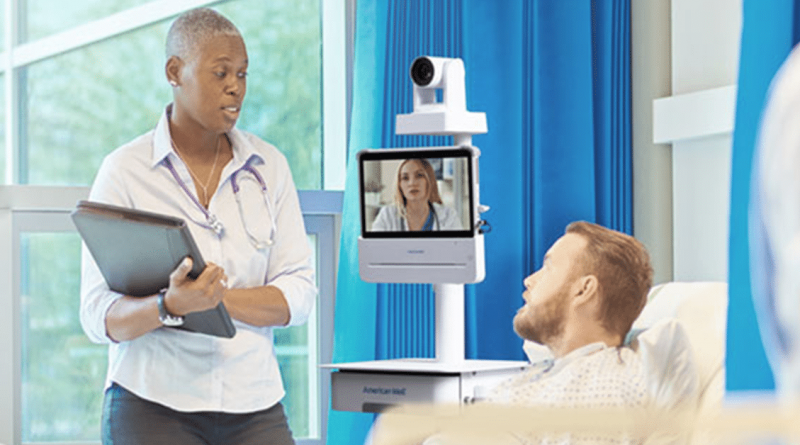All Carts Are Not Created Equal
The accelerating adoption of telehealth as health systems and others realize the value it can have on transforming their organizations and improving provider and patient experiences is exciting. While software is sometimes seen as the flashier part of telehealth, telemedicine devices and carts are often the places where organizations start their journey. Offering a bridge to connect patients to providers at any place or time, devices can dramatically expand a health system’s reach, a patient’s access to care and enhance efficiency in a very resource-constrained industry.
While many care organizations realize the value of telehealth, and the critical role devices play, what is required to build and successfully launch a virtual care program is often underestimated. Frequently industry experts and IT teams will question whether a build or buy approach to telemedicine devices and carts is right for them. If the sheer number of parts required to build a telemedicine cart doesn’t deter you, consider the fact that there are many nuances to telehealth that may not be familiar to IT departments, especially when starting out. Partnering with a telehealth company who lives and breathes virtual care and can provide a head to toe purpose-built device for telehealth is a much better way to go. This type of partner can provide carts that will enable a reliable and consistent experience to ensure simple care delivery.
Here are a few key qualities to prioritize when choosing a telehealth cart:
Ease of Use:
Embarking on your digital transformation journey and launching a telehealth program can be challenging enough, so when selecting technology, it’s important that it’s simple and intuitive. The easier it is to use the easier local site and clinical adoption will be. Additionally, having an on-site device training will help your clinical team be able to use the carts on day-one.
Purpose-built:
Most carts are not purpose-built for telemedicine. To qualify as such, carts should enable pre-configurations, provide seamless over-the-air software updates, and a stable video environment at a minimum. A single click-to-start visit and image integration are also important for improving the provider telehealth experience. Another critical consideration is the operating system running on the device. Using an OS that is designed and maintained for use in telehealth can make all the difference.
Security:
FDA registration is a must for all carts. This may seem like a basic requirement but it’s important to look for carts and peripherals that are all FDA certified to give you and your patients peace-of-mind that the cart will work as it’s intended and alleviate any liability concerns.
Reliability:
Telemedicine carts are meant to enhance the abilities of physicians, but if the technology is unreliable the relationship between the provider and the patient can be broken and there can be negative brand impacts. Reliable fleet management that’s embedded into the carts, coupled with a fleet dashboard will help your teams monitor and manage system controls, as well as, proactively address issues before they become problems.
Support:
Having an easily accessible and centralized support team will help ensure success. You and your staff should be able to turn to one place with questions or issues that arise, so make sure to choose a telehealth partner with a strong customer service team who can be with you every step of the way.
Many of our clients have achieved great success by relying on our expertly built telehealth carts. Take for example the work of NewYork-Presbyterian Hospital. As part of its digital health strategy, the hospital built two ED triage programs using our carts – one for low acuity patients and another for more complex cases. The Express Care Program is meant to expedite the treatment of low-acuity patients within the emergency room. Patients determined to be lower acuity are directed to a private room equipped with an AmwellC750 cart where they are connected to a remote physician who can diagnose and treat them. Through this program, the hospital has reduced ED door-to-discharge time by 70 percent. For patients with more complex conditions, the Medical Screening Exam program streamlines care by connecting ED patients with remote physicians or physician assistants via the carts, who then provide a medical screening exam and order all the appropriate labs and tests. Patients undergo these tests before seeing on-site physicians, who will already have all the information needed to diagnose, treat and optimize discharge. This workflow has been instrumental in accelerating care in the ED and has decreased the door-to-evaluation time by 57%.
Another powerful example is UAB Medicine’s use of telehealth to improve care delivery for stroke. Alabama faces many obstacles when it comes to serving stroke patients, including a lack of vascular neurologists, the highest stroke mortality rate in the country and patients living in very rural areas who need to be transferred which further delays care. By utilizing our C250 and C210 carts, UAB Medicine was able to roll out a successful statewide telestroke network, driving down the average wait time for a stroke consult to only six minutes. Over 430 consults have been completed since inception and nearly 12 percent of visits have resulted in a decrease in the administration of tPA.
You too can achieve these results! To see how and learn more about our fleet of telemedicine devices and carts visit: https://business.amwell.com/telemedicine-equipment/carts/


